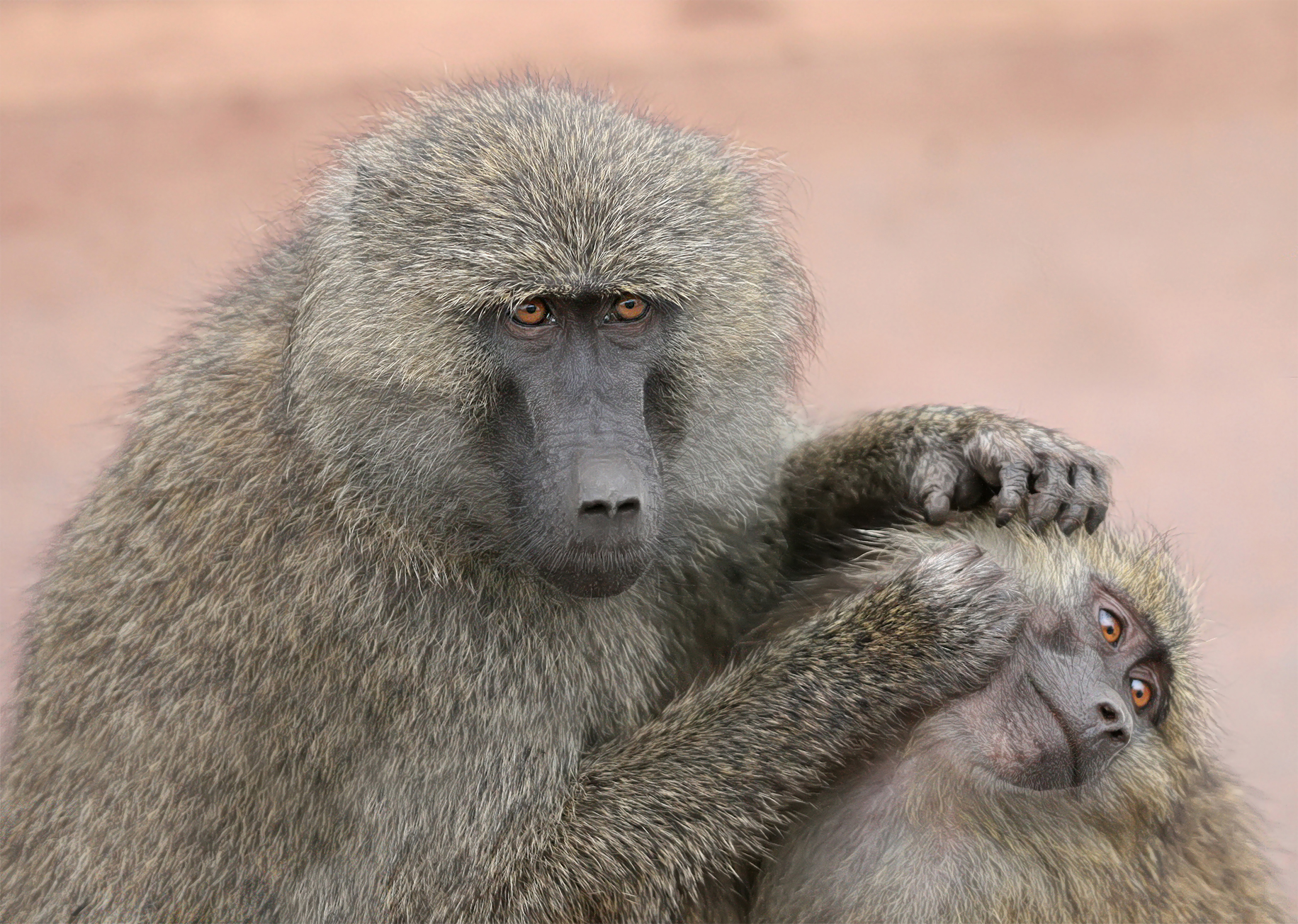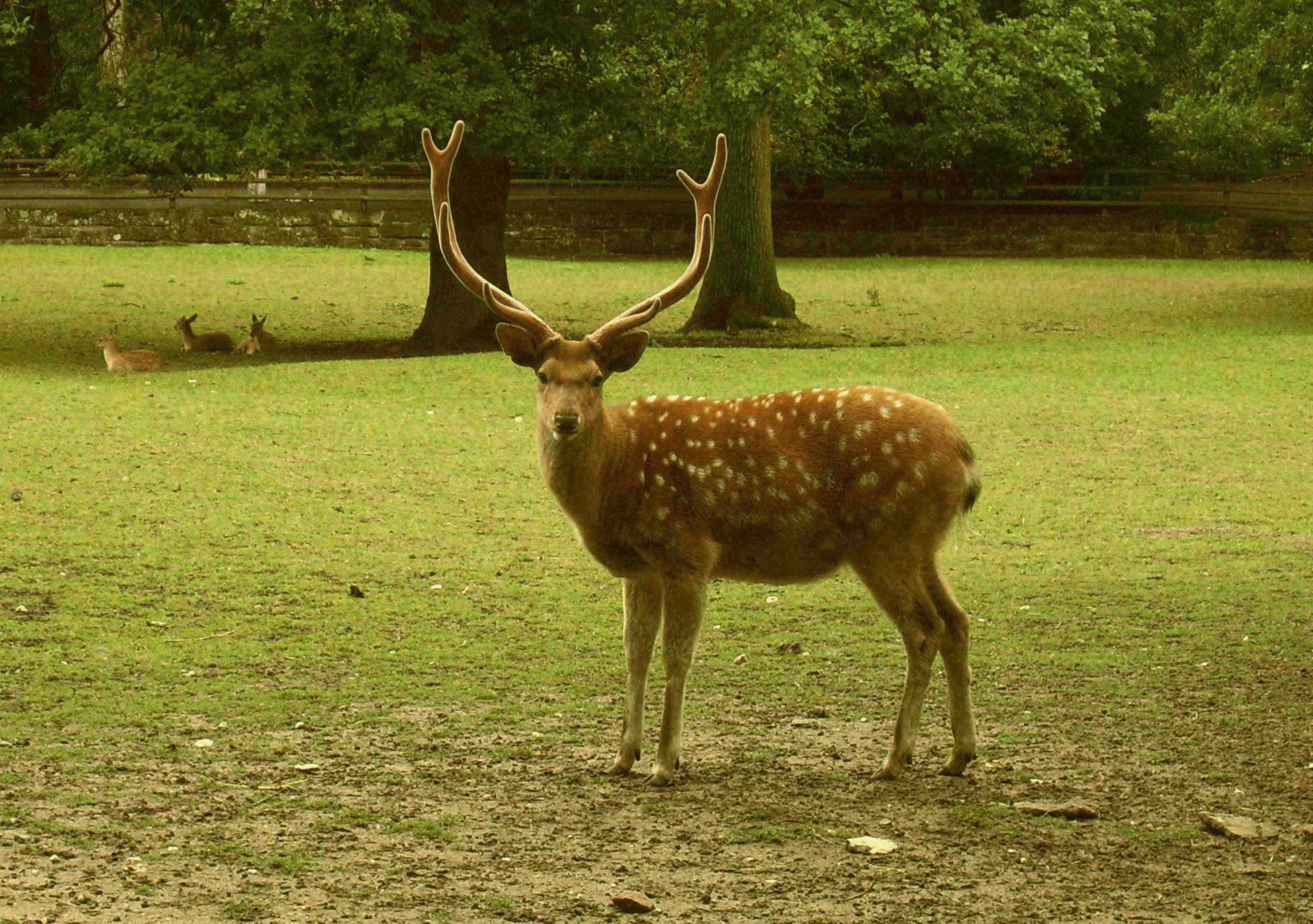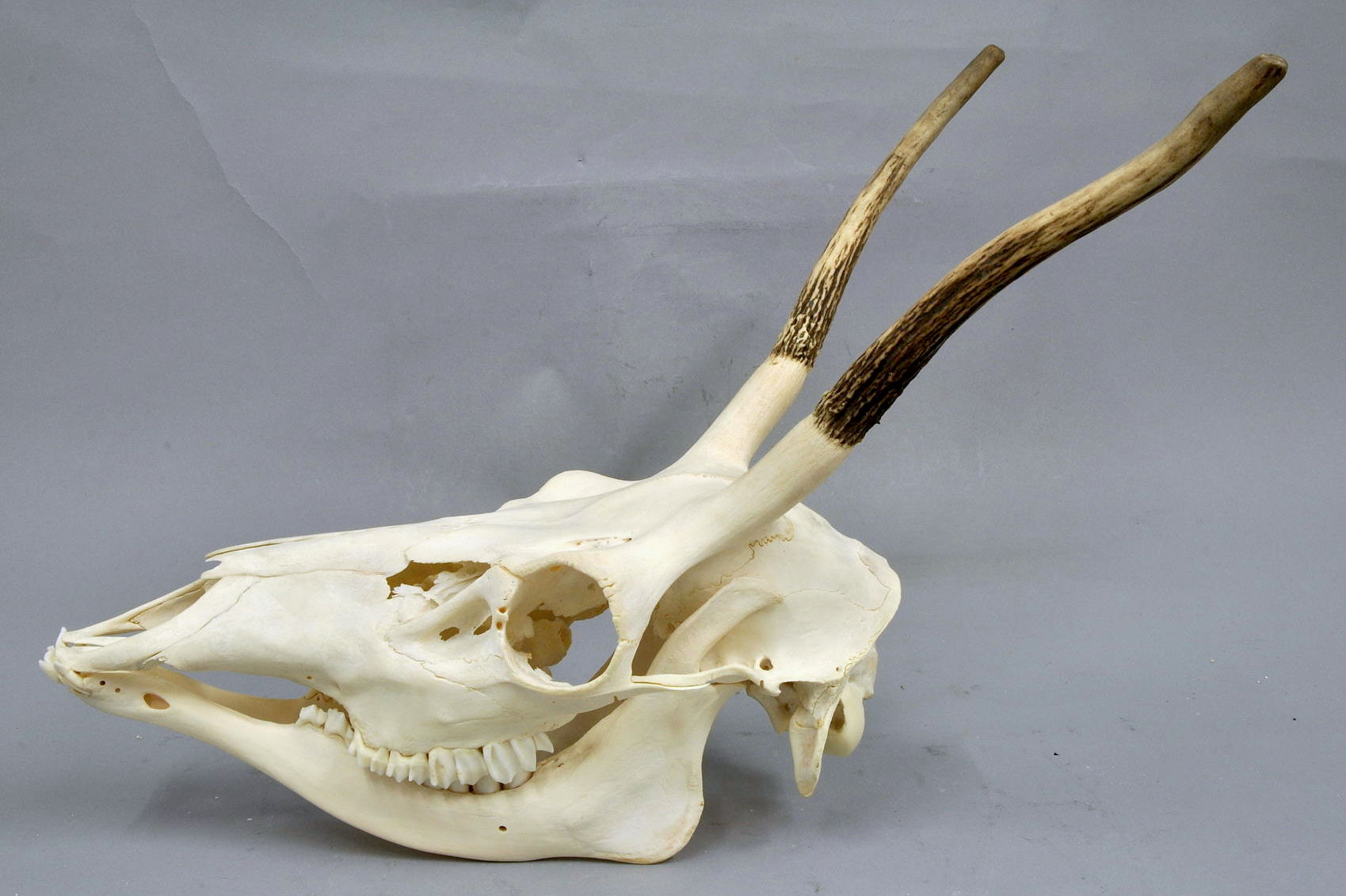|
Harem (zoology)
A harem is an animal group consisting of one or two males, a number of females, and their offspring. The dominant male drives off other males and maintains the unity of the group. If present, the second male is subservient to the dominant male. As juvenile males grow, they leave the group and roam as solitary individuals or join bachelor herds. Females in the group may be inter-related. The dominant male mates with the females as they become sexually active and drives off competitors, until he is displaced by another male. In some species, incoming males that achieve dominant status may commit infanticide. For the male, the primary benefit of the harem system is obtaining exclusive access to a group of mature females. The females benefit from being in a stable social group and the associated benefits of grooming, predator avoidance and cooperative defense of territory. The disadvantages for the male are the energetic costs of gaining or defending a harem which may leave him wi ... [...More Info...] [...Related Items...] OR: [Wikipedia] [Google] [Baidu] [Amazon] |
Callorhinus Ursinus And Harem
''Callorhinus'' is a genus of sea lion. It contains the living northern fur seal ''(Callorhinus ursinus)'' as well as the extinct ''Callorhinus gilmorei'' and an unnamed species, both from the Pliocene and very beginning of the Pleistocene. ''Callorhinus'' may be a sister genus to the extinct giant otariid, ''Thalassoleon''. References {{Authority control Callorhinus, Carnivoran genera Mammal genera with one living species Eared seals Taxa named by John Edward Gray Mammals described in 1859 Biota of the Temperate Northern Pacific ... [...More Info...] [...Related Items...] OR: [Wikipedia] [Google] [Baidu] [Amazon] |
Social Grooming
Social grooming is a behavior in which social animals, including humans, clean or maintain one another's bodies or appearances. A related term, allogrooming, indicates social grooming between members of the same species. Grooming is a major social activity and a means by which animals who live in close proximity may Psychological bond, bond, reinforce social structures and family links, and build companionship. Social grooming is also used as a means of conflict resolution, maternal behavior, and Reconciliation ecology, reconciliation in some species. Mutual grooming typically describes the act of grooming between two individuals, often as a part of social grooming, pair bonding, or a Foreplay, precoital activity. Evolutionary advantages There are a variety of proposed mechanisms by which social grooming behavior has been hypothesized to increase Fitness (biology), fitness. These evolutionary advantages may come in the form of health benefits including reduction in Transmiss ... [...More Info...] [...Related Items...] OR: [Wikipedia] [Google] [Baidu] [Amazon] |
Lion
The lion (''Panthera leo'') is a large Felidae, cat of the genus ''Panthera'', native to Sub-Saharan Africa and India. It has a muscular, broad-chested body (biology), body; a short, rounded head; round ears; and a dark, hairy tuft at the tip of its tail. It is sexually dimorphic; adult male lions are larger than females and have a prominent mane. It is a social species, forming groups called prides. A lion's pride consists of a few adult males, related females, and cubs. Groups of female lions usually hunt together, preying mostly on medium-sized and large ungulates. The lion is an apex predator, apex and keystone predator. The lion inhabits grasslands, savannahs, and shrublands. It is usually more diurnality, diurnal than other wild cats, but when persecuted, it adapts to being active nocturnality, at night and crepuscular, at twilight. During the Neolithic period, the lion ranged throughout Africa and Eurasia, from Southeast Europe to India, but it has been reduced to fr ... [...More Info...] [...Related Items...] OR: [Wikipedia] [Google] [Baidu] [Amazon] |
Jamaican Fruit Bat
The Jamaican, common, or Mexican fruit bat (''Artibeus jamaicensis'') is a frugivorous bat species native species, native to the Neotropical realm, Neotropics. Description The Jamaican fruit bat is a medium-sized bat, having a total length of with a wingspan and weighing . It has broad but pointed and ridged ears with a serrated Tragus (ear), tragus. Its prominent noseleaf has an array of sebaceous glands. The lower lip is littered with warts with a relatively large one in the center. Sebaceous holocrine glands can be found in both lips. On the back the fur is an ashy-shade of gray or brown with visible white hair bases and variable fur patterning on the face. The wings of the fruit bat are broad and dark gray in color. The underfur is paler in color. The fruit bat has no external tail. It has broad dark grey wings and a narrow hairless interfemoral membrane with a short calcar. The distinctive features of the Jamaican fruit bat (which however are shared by some of its relativ ... [...More Info...] [...Related Items...] OR: [Wikipedia] [Google] [Baidu] [Amazon] |
Greater Short-nosed Fruit Bat
The greater short-nosed fruit bat (''Cynopterus sphinx''), or short-nosed Indian fruit bat, is a species of megabat in the family Pteropodidae found in South and Southeast Asia. Description These bats have a relatively long snout. Their upper parts are brown to grey-brown with paler under parts. The fur is very fine and silky. The ears and wing bones of ''C. sphinx'' are edged in white. Lower cheek teeth rounded without accessory cusps. The wingspan of the adult is about . Juveniles are lighter than adults. Average forearm length is , with a range of . Habitat The greater short-nosed fruit bat is found from Pakistan to Vietnam. It is common in tropical forests and areas where fruit crops are cultivated. They can also be found in grasslands and mangrove forests. They typically nest high in palm trees. The bats chew the fronds of the palms to construct fairly simple tents. These bats are also known to construct tents by closely interweaving the leaves and twigs of creeping vines w ... [...More Info...] [...Related Items...] OR: [Wikipedia] [Google] [Baidu] [Amazon] |
Elephant Seal
Elephant seals or sea elephants are very large, oceangoing earless seals in the genus ''Mirounga''. Both species, the northern elephant seal (''M. angustirostris'') and the southern elephant seal (''M. leonina''), were hunted to the brink of extinction for lamp oil by the end of the 19th century, but their numbers have since recovered. They can weigh up to . Despite their name, elephant seals are not closely related to elephants, and the large proboscis or trunk that males of the species possess is an example of convergent evolution. The northern elephant seal, somewhat smaller than its southern relative, ranges over the Pacific coast of the U.S., Canada and Mexico. The most northerly breeding location on the Pacific Coast is at Race Rocks Marine Protected Area, at the southern tip of Vancouver Island in the Strait of Juan de Fuca. The southern elephant seal is found in the Southern Hemisphere on islands such as South Georgia and Macquarie Island, and on the coasts of New Z ... [...More Info...] [...Related Items...] OR: [Wikipedia] [Google] [Baidu] [Amazon] |
Fur Seal
Fur seals are any of nine species of pinnipeds belonging to the subfamily Arctocephalinae in the family Otariidae. They are much more closely related to sea lions than Earless seal, true seals, and share with them external ears (Pinna (anatomy), pinnae), relatively long and muscular foreflippers, and the ability to walk on all fours. They are marked by their dense pelage, underfur, which made them a long-time object of commercial Seal hunting, hunting. Eight species belong to the genus ''Arctocephalus'' and are found primarily in the Southern Hemisphere, while a ninth species also sometimes called fur seal, the Northern fur seal (''Callorhinus ursinus''), belongs to a different genus and inhabits the North Pacific. The fur seals in ''Arctocephalus'' are more closely related to sea lions than they are to the Northern fur seal, but all three groups are more closely related to one another than they are to true seals. Taxonomy Fur seals and sea lions make up the family Otariidae. ... [...More Info...] [...Related Items...] OR: [Wikipedia] [Google] [Baidu] [Amazon] |
Collared Peccary
The collared peccary (''Dicotyles tajacu'') is a peccary, a species of artiodactyl (even-toed) mammal in the family Peccary, Tayassuidae found in North America, North, Central America, Central, and South America. It is the only member of the genus ''Dicotyles''. They are commonly referred to as ''javelina, saíno'', ''taitetu'', or ''báquiro'', although these terms are also used to describe other species in the family. The species is also known as the musk hog. In Trinidad, it is colloquially known as ''quenk''. Taxonomy Although somewhat related to true Old World pigs, and frequently referred to as a pig, this species and the other peccaries are no longer classified in the pig family, Suidae. Although formerly classified in the genus ''Pecari'', studies in 2020 placed them in the genus ''Dicotyles'', based on an unequivocal type-species selection; these studies have been accepted by the American Society of Mammalogists. Currently, the IUCN still places them in the genus ''Pecar ... [...More Info...] [...Related Items...] OR: [Wikipedia] [Google] [Baidu] [Amazon] |
Fallow Deer
Fallow deer is the common name for species of deer in the genus ''Dama'' of subfamily Cervinae. There are two living species, the European fallow deer (''Dama dama''), native to Europe and Anatolia, and the Persian fallow deer (''Dama mesopotamica''), native to the Middle East. The European species has been widely introduced elsewhere. Name The name fallow is derived from the deer's Fallow (color), pale brown colour. The Latin language, Latin word or , used for roe deer, gazelles, and antelopes, lies at the root of the modern scientific name, as well as the German language, German , French language, French , Dutch language, Dutch ', and Italian language, Italian '. In Serbo-Croatian language, Serbo-Croatian, the name for the fallow deer is ''jelen lopatar'' ("shovel deer"), due to the form of its antlers. The Modern Hebrew name of the fallow deer is (). Description The Persian fallow deer is the larger of the two living species, with an average body mass of around , and a s ... [...More Info...] [...Related Items...] OR: [Wikipedia] [Google] [Baidu] [Amazon] |
Sika Deer
The sika deer (''Cervus nippon''), also known as the northern spotted deer or the Japanese deer, is a species of deer native to much of East Asia and introduced to other parts of the world. Previously found from northern Vietnam in the south to the Russian Far East in the north, it was hunted to the brink of extinction in the 19th century. Protection laws were enacted in the mid-20th century, leading to a rapid recovery of their population from the 1950s to the 1980s. Etymology Its name comes from , the Japanese word for "deer". In Japan, the species is known as the . In Chinese, it is known as due to the spots resembling plum blossoms. Taxonomy The sika deer is a member of the genus '' Cervus'', a group of deer also known as the "true" deer, within the larger deer family, Cervidae. Formerly, sika were grouped together in this genus with nine other diverse species; these animals have since been found to be genetically different, and reclassified elsewhere under different ... [...More Info...] [...Related Items...] OR: [Wikipedia] [Google] [Baidu] [Amazon] |
Red Deer
The red deer (''Cervus elaphus'') is one of the largest deer species. A male red deer is called a stag or Hart (deer), hart, and a female is called a doe or hind. The red deer inhabits most of Europe, the Caucasus Mountains region, Anatolia, Iran, and parts of western Asia. It also inhabits the Atlas Mountains of Northern Africa, being the only living species of deer to inhabit Africa. Red deer have been introduced to other areas, including Australia, New Zealand, the United States, Canada, Peru, Uruguay, Chile and Argentina. In many parts of the world, the meat (venison) from red deer is used as a food source. The red deer is a ruminant, characterized by a four-chambered stomach. Genetics, Genetic evidence indicates that the red deer, as traditionally defined, is a species group, rather than a single species, though exactly how many species the group includes remains disputed. The ancestor of the red deer probably originated in central Asia. Although at one time red deer were ... [...More Info...] [...Related Items...] OR: [Wikipedia] [Google] [Baidu] [Amazon] |
Elephant Seal
Elephant seals or sea elephants are very large, oceangoing earless seals in the genus ''Mirounga''. Both species, the northern elephant seal (''M. angustirostris'') and the southern elephant seal (''M. leonina''), were hunted to the brink of extinction for lamp oil by the end of the 19th century, but their numbers have since recovered. They can weigh up to . Despite their name, elephant seals are not closely related to elephants, and the large proboscis or trunk that males of the species possess is an example of convergent evolution. The northern elephant seal, somewhat smaller than its southern relative, ranges over the Pacific coast of the U.S., Canada and Mexico. The most northerly breeding location on the Pacific Coast is at Race Rocks Marine Protected Area, at the southern tip of Vancouver Island in the Strait of Juan de Fuca. The southern elephant seal is found in the Southern Hemisphere on islands such as South Georgia and Macquarie Island, and on the coasts of New Z ... [...More Info...] [...Related Items...] OR: [Wikipedia] [Google] [Baidu] [Amazon] |








